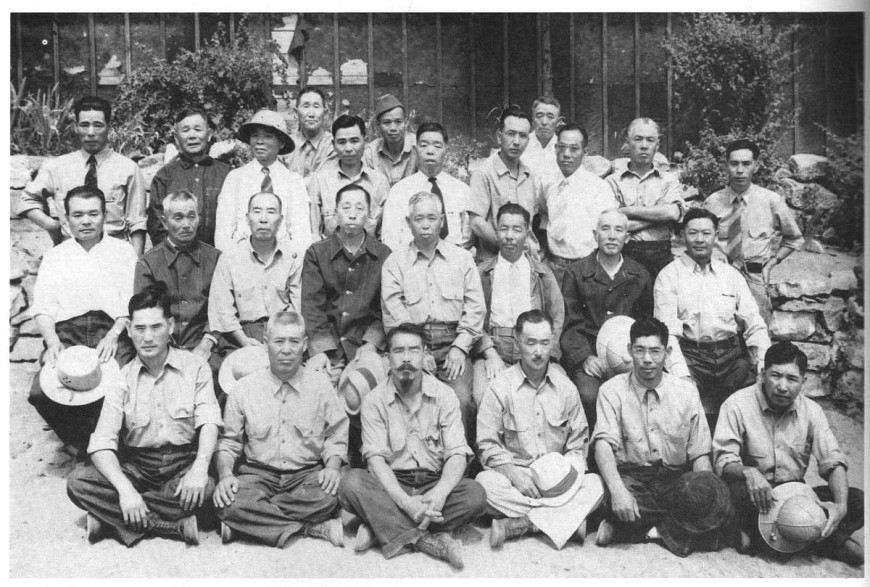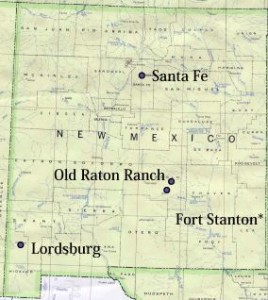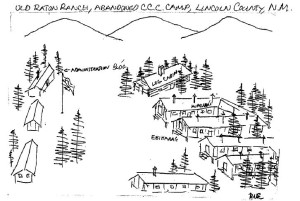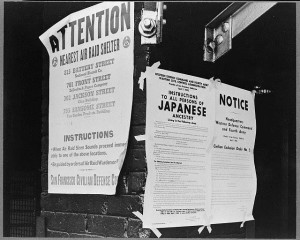
Japanese-American internees at Camp Lordsburg in New Mexico. Courtesy of the National Archives
A Colorado State University team of historians is working to preserve and spread the stories of Japanese Americans who were detained in New Mexico confinement camps during the World War II era.
 The project, “Confinement in the Land of Enchantment: Japanese Americans in New Mexico during WWII,” or CLOE, will result in an outreach publication as well as an online interactive timeline and map documenting the stories of the families who suffered imprisonment as a result of racism and wartime hysteria.
The project, “Confinement in the Land of Enchantment: Japanese Americans in New Mexico during WWII,” or CLOE, will result in an outreach publication as well as an online interactive timeline and map documenting the stories of the families who suffered imprisonment as a result of racism and wartime hysteria.
As many as 120,000 Japanese Americans were sent to confinement sites nationwide between 1942 and 1946, including camps in New Mexico: Santa Fe, Fort Stanton, Old Raton Ranch (Baca Camp) and Camp Lordsburg.
Roots of the project
Assistant Professor Sarah Payne began the project in 2011 while she was working as a consultant in New Mexico, before she joined CSU’s Department of History. Thanks to a Japanese American Confinement Sites grant from the National Park Service that she received in collaboration with the New Mexico Japanese American Citizens League, Payne had already compiled oral histories, archival research and archeological surveys at Lordsburg and Baca when she arrived at CSU in 2012.
In addition to telling the stories of detainees held at each camp, the project examines how the surrounding communities interacted with their Japanese and Japanese-American neighbors, both inside and outside of the camps.
The NPS Japanese American Confinement Sites grant was renewed for two years in 2014 for a final implementation phase through CSU’s Public Lands History Center. It is worth about $190,000 and requires Payne to raise $92,000 in matching funds.

Thanks to that funding, copies of the resulting educational book will be distributed to New Mexico libraries, public schools and historic sites, and will be available on the New Mexico Office of the State Historian website.
Alums contribute
The grant funding also allowed Payne to hire two recent graduates of CSU’s master’s program in history, Kellie Nicholas and Tessa Moening, to help with the project. Nicholas and Moening, the project coordinator, have authored several chapters in the 100-page book. Andrew Russell, a history professor at Central New Mexico Community College, is co-principal investigator on the project.
The online map/timeline will include oral histories from family members of those incarcerated, images of objects detainees made, diary entries and original plans for some of the camps.
The effort will also involve erecting historic markers at a few of the sites, including Fort Stanton, Lordsburg and Baca, where the U.S. Forest Service is installing a new historical display.

Objectives
The long-term goals of the project are twofold. First, the project will increase the level of awareness New Mexicans have about the Japanese-American confinement sites located in their state, and about this chapter in U.S. history.
The second long-term effect will be to facilitate the connection of people to the places where they live by providing New Mexicans with a more nuanced understanding of the histories of their state. The effort aims to promote discussion about identity, citizenship and civil liberties.
The project, which is expected to be completed next fall, receives guidance from an advisory board that includes Japanese Americans.
The initiative still needs about $10,000 in matching funds; to contribute, contact Moening at tesmoe@rams.colostate.edu, or send a donation to the Public Lands History Center, Colorado State University, 1776 Campus Delivery, Fort Collins, 80523-1776. Checks can be made out to the CSU Foundation, with “CLOE Project” in the memo line.
Support future Public Lands History Center projects by making a gift online at advancing.colostate.edu/PLHCSPECIALPROJECTS.
The Department of History is part of CSU’s College of Liberal Arts.

Camp Lordsburg in New Mexico, 1943. Courtesy of the Lordsburg Hidalgo County Museum